A masterfully laid 200 year old wall bordering a listed building, falling apart from the top and in desperate need of repair.
This wall was built around 1820 and had stood the test of time to still be standing completely upright.
The mortar however had weathered to its limit. The coping course of bricks were loose and water ingress was blowing out stones during freeze thaw cycles. Invasive plants had set root in the moist crumbling mortar compounding the slow dismantling of this historic, masterfully crafted, rubble stone wall.
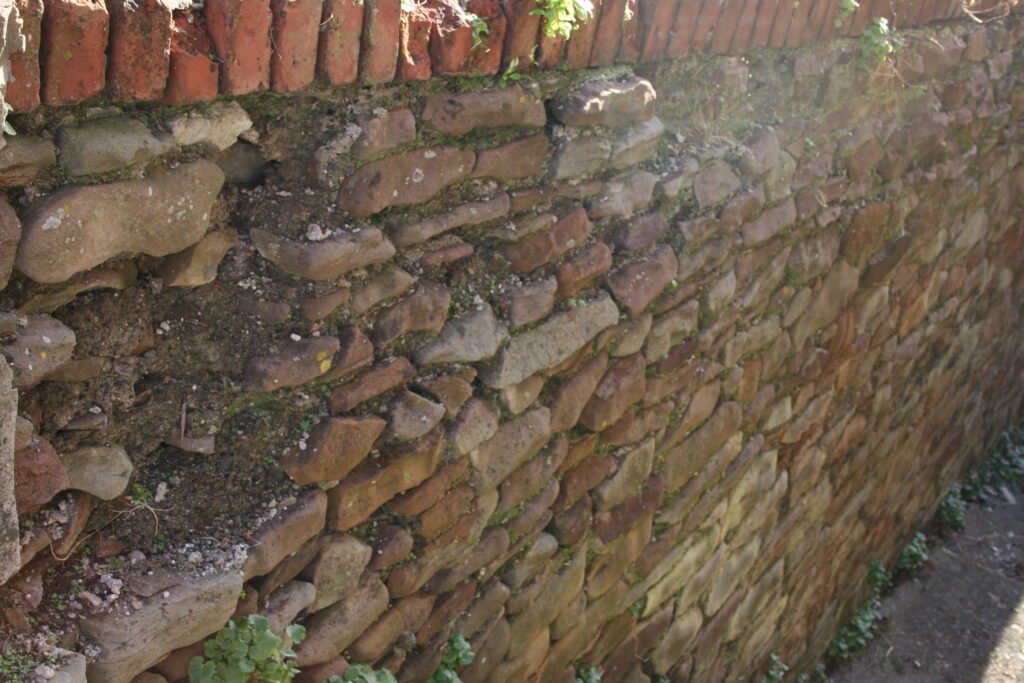


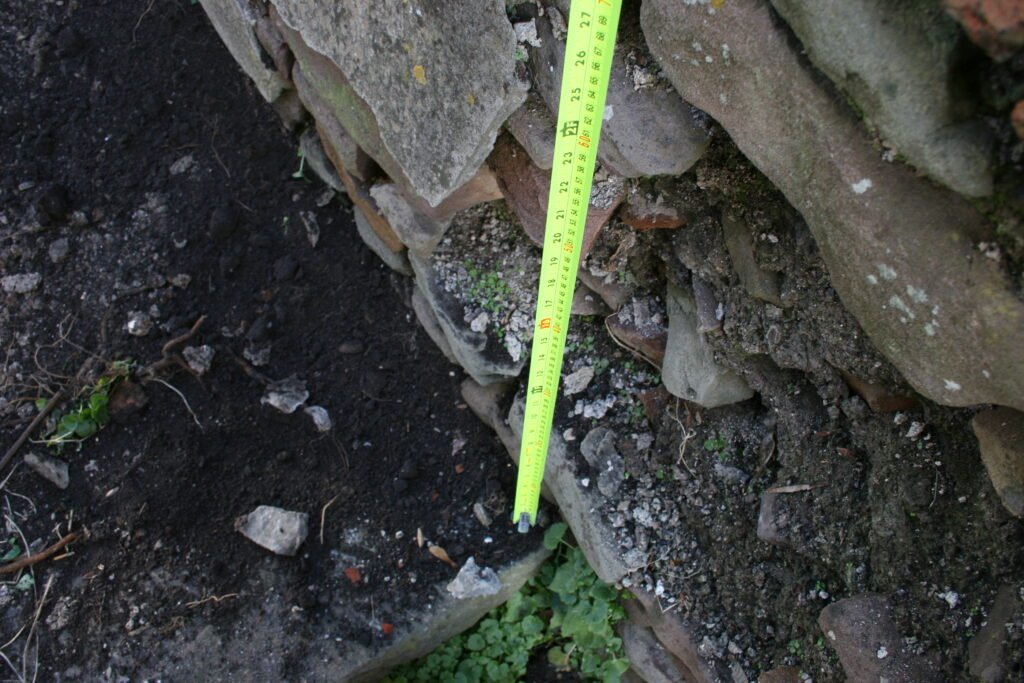

The Brief
It was decided to restore and repoint the wall using lime mortar, as using cement would cause irreversible damage by trapping moisture and exerting excessively high compressive strength. We aimed to preserve as much historical value as possible, including some of the original jointing at lower levels, which remained structurally sound due to their sheltered location.
Breathable Lime Mortar
Lime mortar is the ideal choice for restoring any internal or external historic walls, as they were originally constructed using this binder for the mortar. Lime mortar is breathable, long lasting and flexible enough not to crack as slight seasonal movement occurs.
Lime mortar sets more slowly in cold weather, increasing the risk of frost damage due to its high moisture content, which expands when exposed to frost. For this reason lime working season is typically between spring and autumn.
Dismantling
The highest point of the wall was in danger of collapse into the walkway below and stones were already falling into the passage. For safety the dangerous sections were carefully dismantled and the open core of the wall protected from the elements until warmer weather arrived.

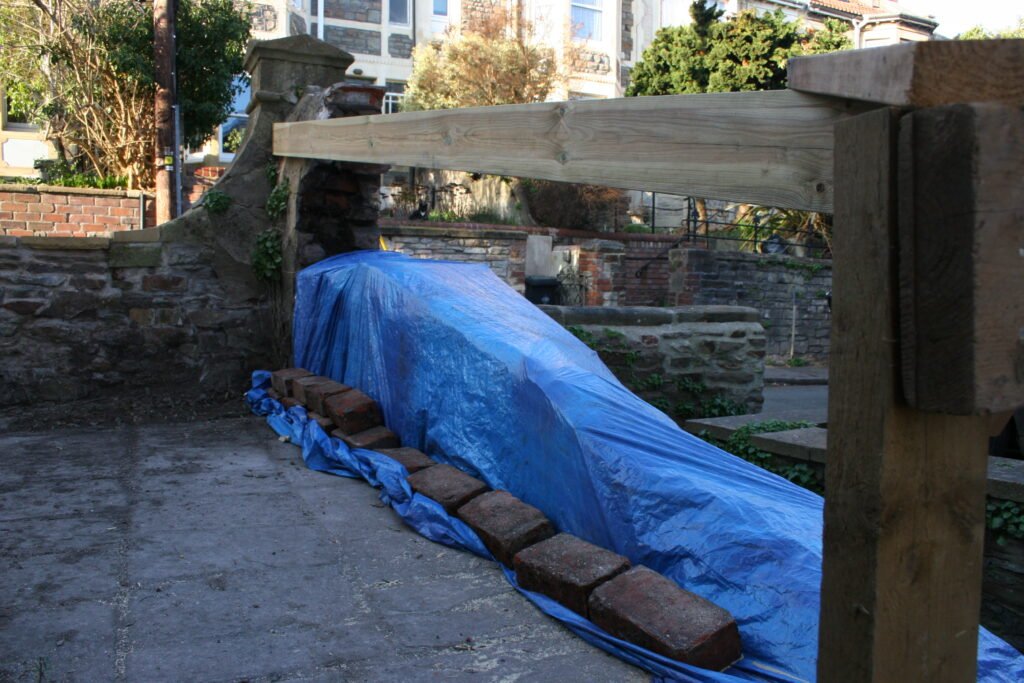

The Finished Wall
A 1:3 mix was used comprising of NHL 3.5 Lime to a mix of a locally sourced well graded grit sand, a fine sharp sand and an even finer sharp ginger sand to give the mortar a slight peach colouration which contrasts beautifully to the subtle green and blue tones of the pennant sandstone. The colouration radiates on a bright day illuminated by the diffused light between the properties.

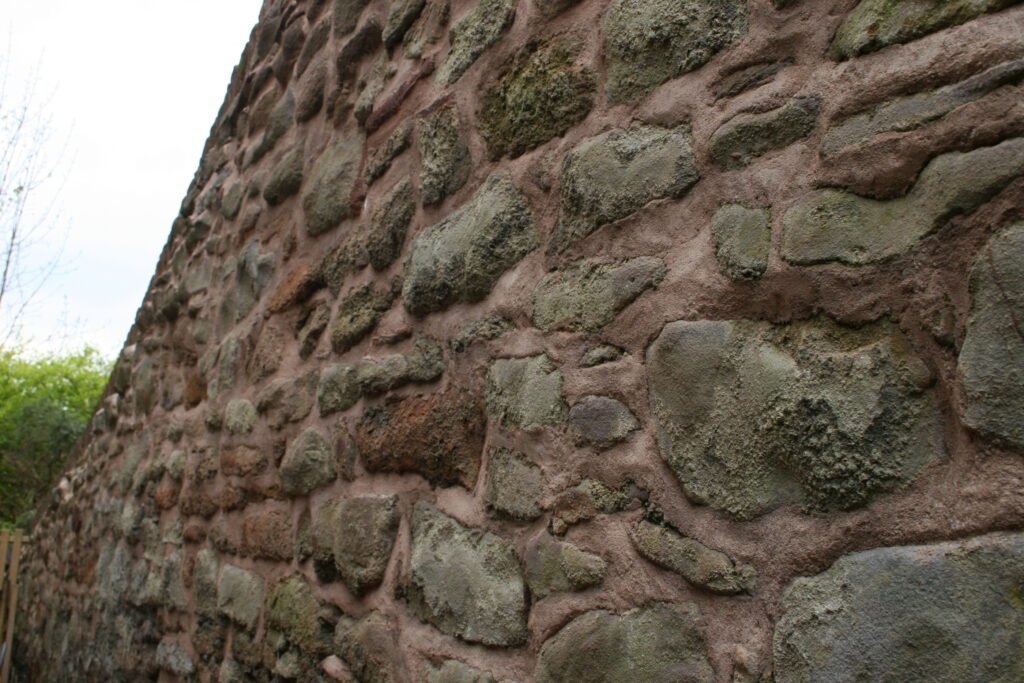
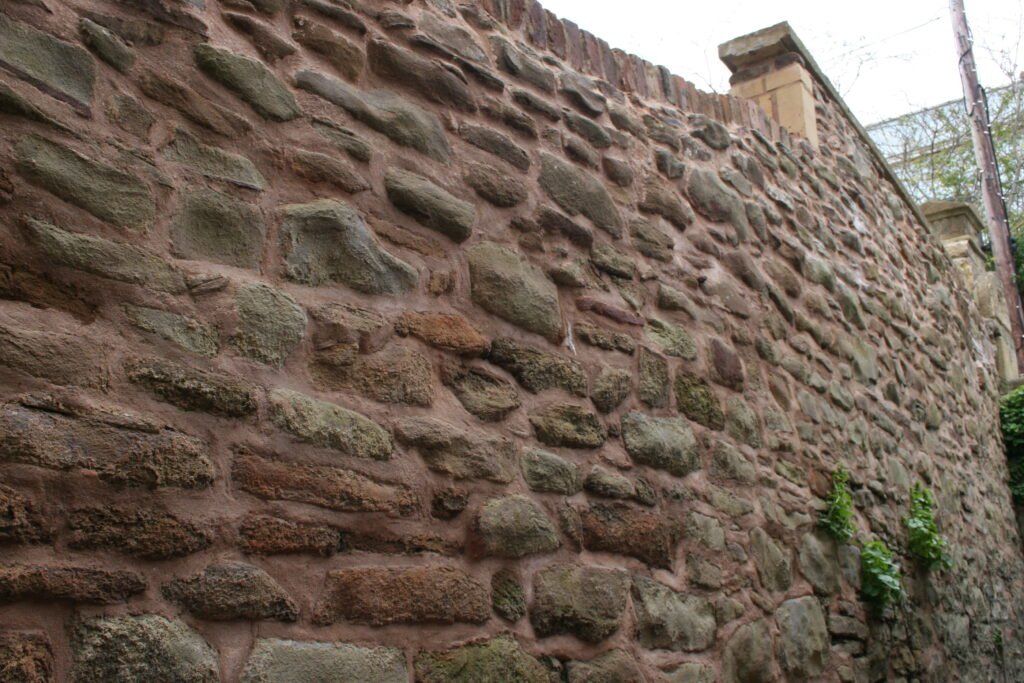
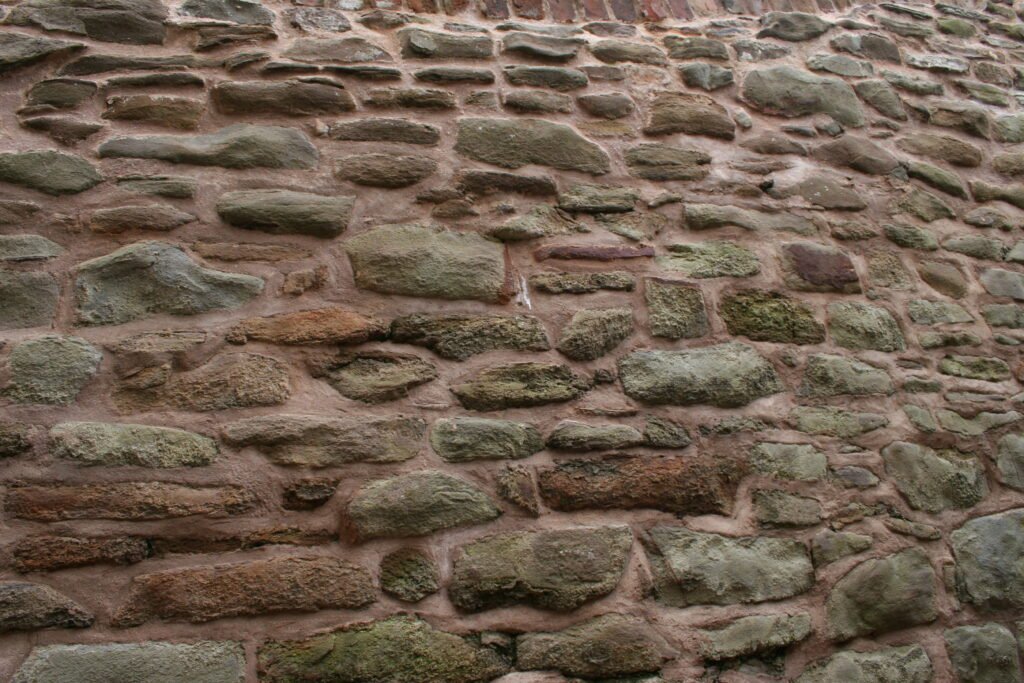
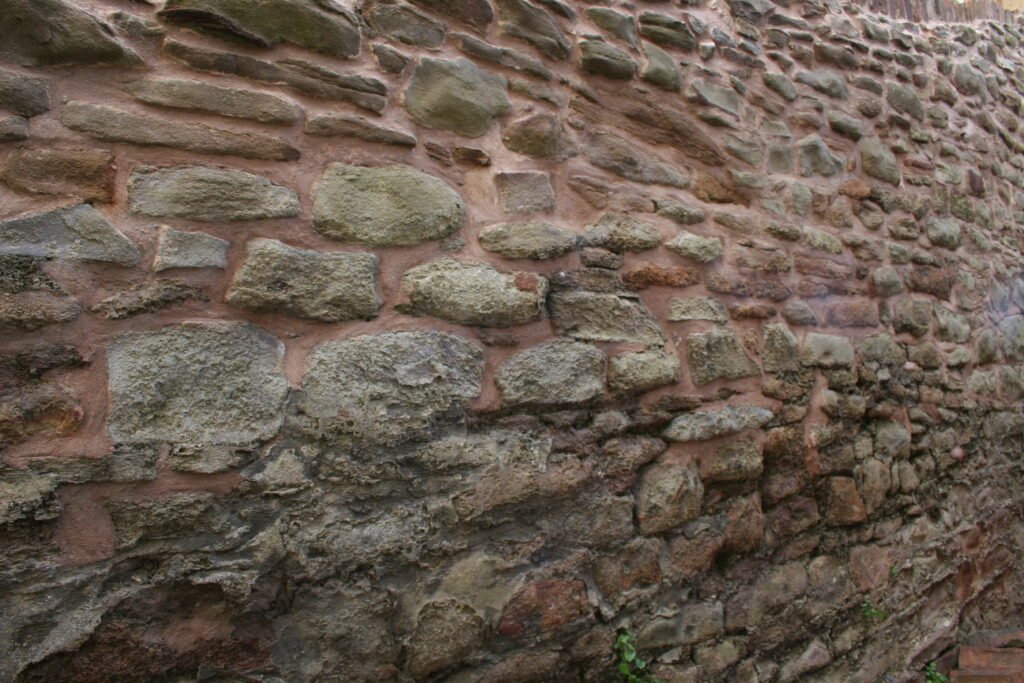

The finished restoration from the other side


The traditional brick coping of the local area was lovingly restored with a gentle meandering curve following the height changes in the passages below.



The entire raised wall section at the top was rebuilt in the same profile as before with the traditional bath stone copings cleaned up and re-laid.
Its brings great satisfaction to save a historic wall from fading away and give a new lease of life to a heritage feature of the city of Bristol that can now stand into the next century and beyond. The client was amazed by the transformation of the wall itself and also of how the restored wall reflected upon the house and even the street as a whole, lifting up the area from a feeling of decay, to one of order, by restoring this landmark wall to its former glory.

